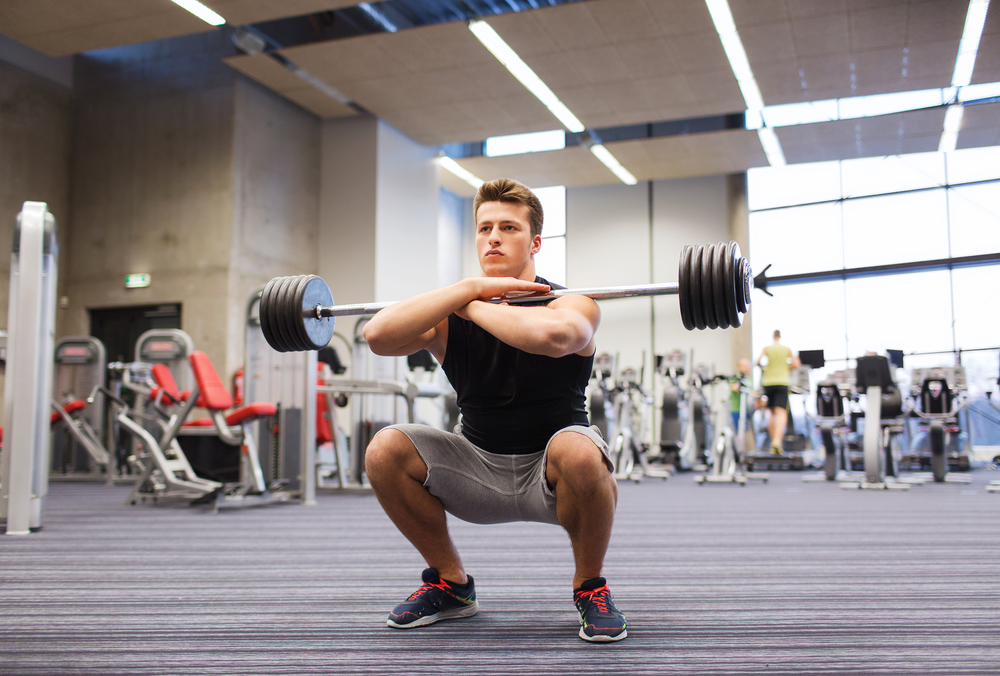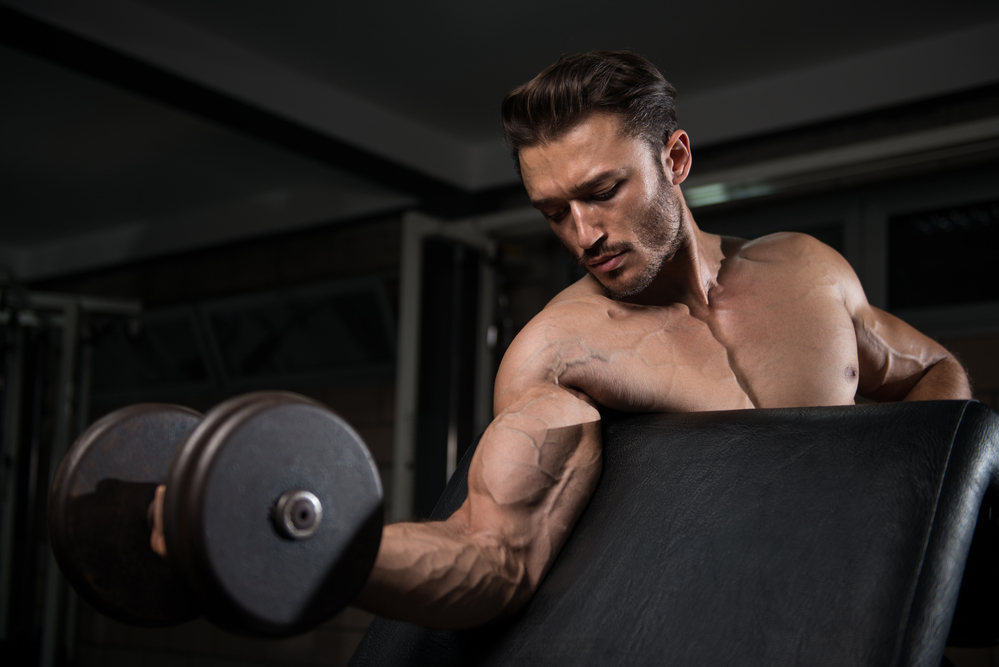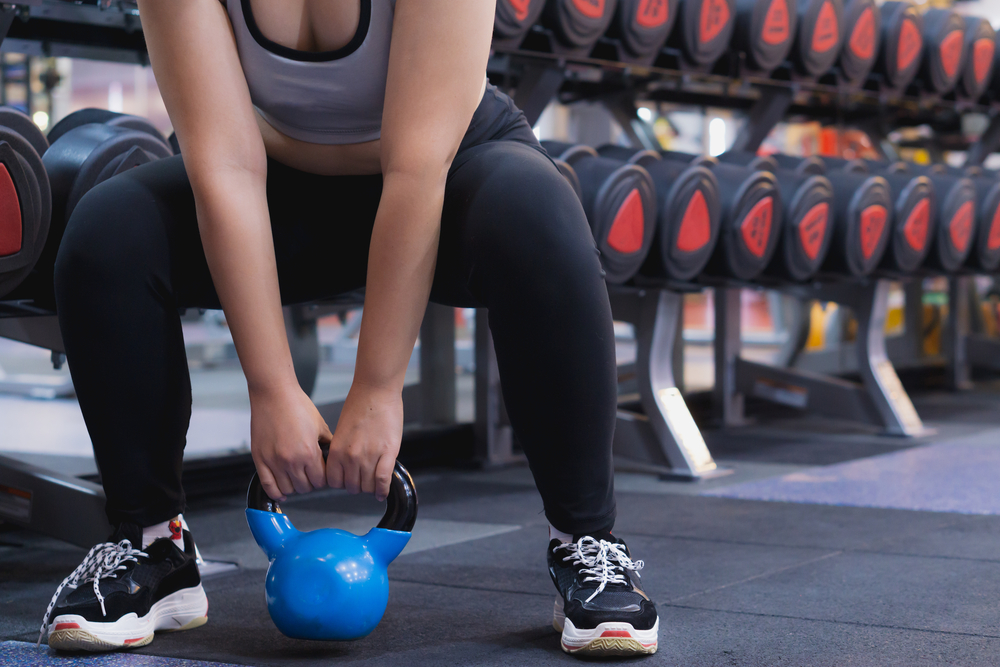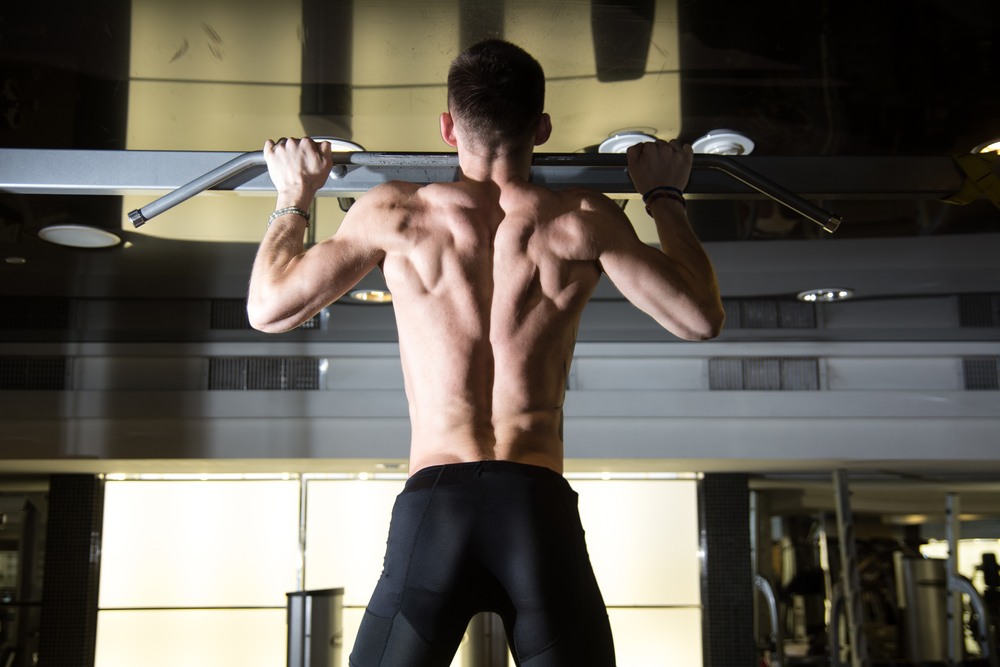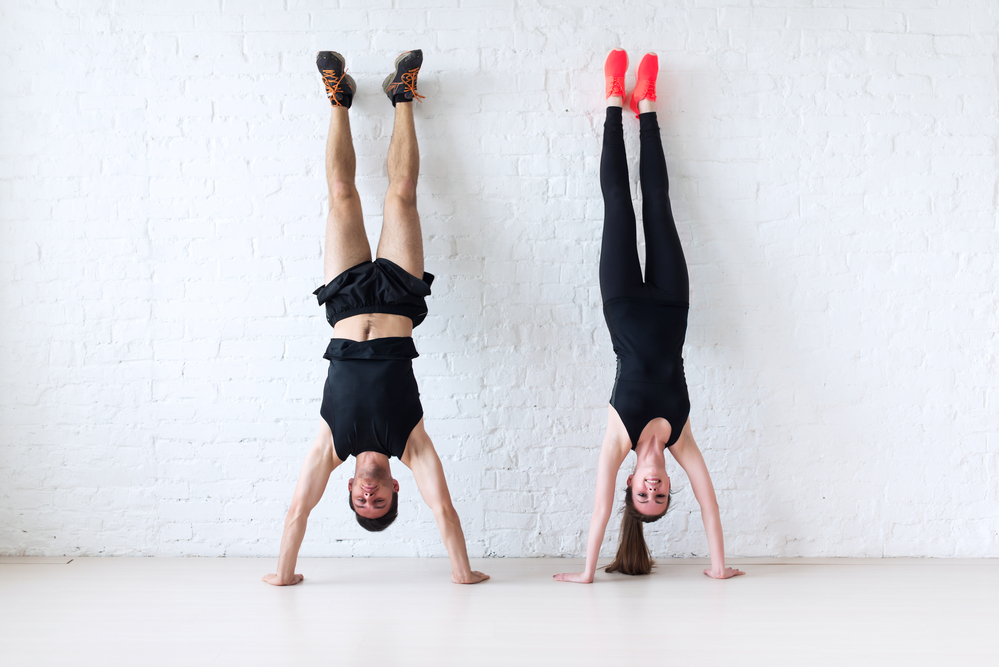
Table of Contents
The handstand is a quite complicated exercise, which will require from you both general physical fitness and well-developed coordination of movements. The exercise is used in CrossFit, bodybuilding, gymnastics and can be part of the training programs with own weight of the advanced level.
What does a handstand give?
In addition to the fact that the handstand itself looks very spectacular and allows you to demonstrate your great physical form, it is also a very useful exercise.
Any of the following points can be an argument for learning to perform this exercise:
The handstand provides a powerful muscle strain. The main load falls on the shoulder girdle, arm, and core muscles
It will improve your coordination and a sense of balance. The handstand will enhance overall control over your own body. The benefits of such training are obvious not only in the gym but also in everyday life
Handstand also improves blood circulation. Blood rushes to the brain, increasing the supply of oxygen to its cells
Contraindications
It’s not recommended to perform the handstand in the presence of the following conditions:
Injuries to the shoulders, elbow, or wrists
Spine problems
Intracranial pressure, headache, head injuries
Cardiovascular system diseases
Exacerbation of inflammatory diseases, menstruation, or late pregnancy
Handstand technique
Before proceeding to master the handstand without support, you should learn how to perform the exercise near the wall.
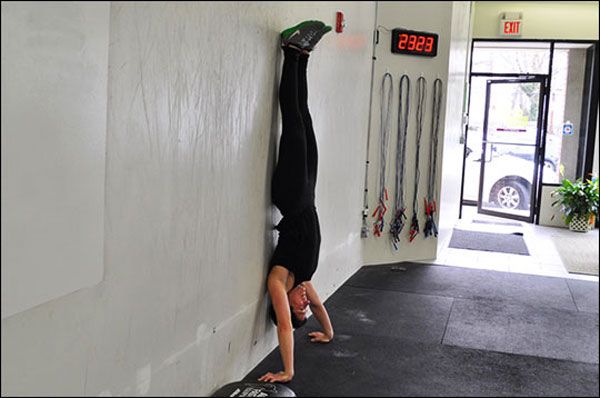
It’s better to start training near the wall
An important stage of training is to overcome the psychological fear of falling when entering the handstand. Even athletes with good physical fitness are recommended to do the handstand the first time with the wall support or use a partner who can hold you in case of unsteadiness. You can put a gymnastic mat in front of you so that in case you fall forward on your back it will soften the impact. Remember, that hands should be put only on a solid surface in any case!
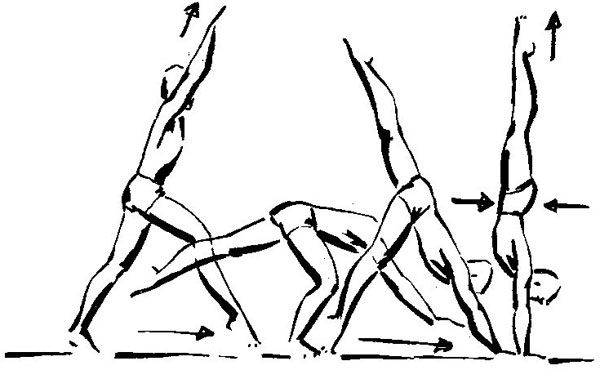
Standing technique
Handstand at the wall:
Face the wall and bring one leg forward. The leg you are still standing on will make a straight line with your body throughout the entire movement
You should springy step on the outstretched leg in a quick movement and bend sharply with a straight body, twisting at the hip. Straight up the second leg to the back, making a swinging movement. Put your hands on the floor 10-15 cm from the wall. Put your head down, and then push the second leg elastically off the floor. The force of the push and the inertia of the swing will allow you to throw your pelvis and legs up and perform a handstand. Try to stay as straight as possible, without sagging your shoulders or arching your lower back. The body must be stretched in a string
Try to look at your body
Coming out of this position, first lower one leg, then the other
If you want in the future to master a handstand without support, it is not recommended to practice it against the wall for a long time. This is since the weight of the body is not distributed quite evenly when leaning against the wall and an involuntary bend in the lower back is formed, which ideally should not be there. Therefore, once you have mastered the technique of a handstand against the wall, start gradually taking your feet off the wall, and then stand on your hands without touching the wall with your feet.
A handstand without support is technically a bit more complicated. It is performed in the same way as the abovementioned exercise. The difficulty lies in keeping the body upright.
Therefore, skipping the moment of entering the handstand, let’s focus exactly on keeping the balance. How to learn to master it without support?
Your body must be strictly perpendicular to the ground to maintain balance
Your shoulders are fully open, which means your arms and body should not form an angle
Remember to keep a straight line
The fingers of the hands are open and point forward. Keep the load center off the hands, as it may seem right at first, try to keep it on the fingers and on the place where the fingers are attached to the palm
Your back should be straight. At first, it seems that the bend in the lower back helps to balance, but it’s not so. If there is even a little bend, then your head will be involuntarily pulled forward, which subjects the lumbar spine to an additional unwanted load
Extended your legs upward
Keep your head between the arms, direct your gaze straight ahead, and don’t look at the ground
It is difficult to subjectively estimate your own position, so ask somebody to take a picture or shoot a video. This way it will be easier to correct possible mistakes.
Coming out of a pose
If you feel unbalanced when you enter this pose, try fixing the position first with your fingers or changing the position of your feet. Try not to lean on your hands until the pose itself is perfect. By the time you perfect the exercise technique, you’ll not need any additional training. It will be a piece of cake for you.
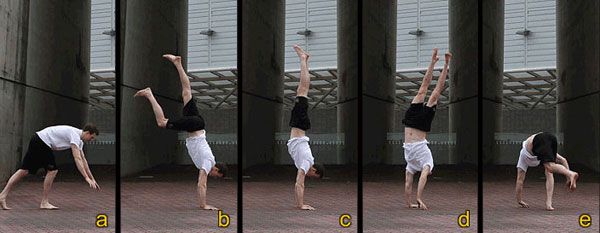
Come out in a U-turn in the direction of the fall
You can come out of the handstand the same way as you enter it, only in reverse, or to the side or forward (the side where your back is directed).
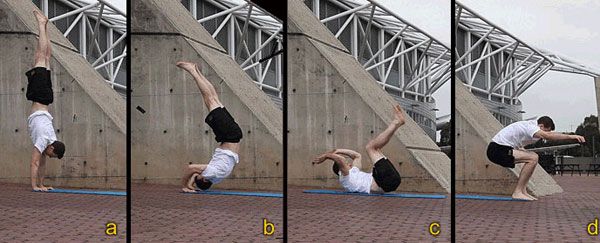
Coming out with the somersault
Complicated variants of the exercise
There are a lot of options to complicate and diversify such exercise if you have already mastered the classical pose.
Using bars
First, you can try to learn how to do it on parallel bars or on special supports that are put on the floor. This is a more difficult variant due to the reduction of inertia. You rise the body largely due to the effort of your muscles. However, the hands-on bars are more natural for your body, which makes it a bit easier to keep the balance.
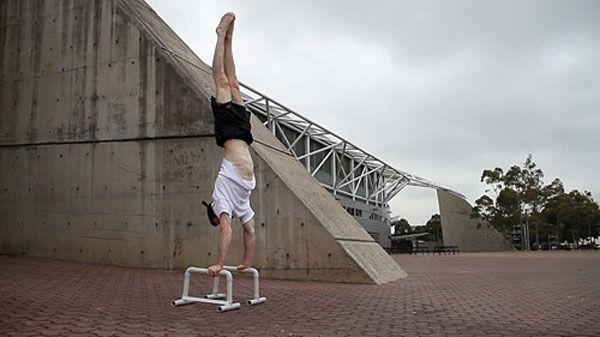
Handstand: Using Special Stops
Pirouette or U-turn
The pirouette exercise is a turn on the bars without ending the movement. To learn how to perform it, first practice holding your hands steady, do not bend your back, transferring your weight in the direction of the turn. When you’ve mastered it, move your arms from one support to the other. When you have completed the turn, level off and stabilize your position. Only then you can end the exercise.
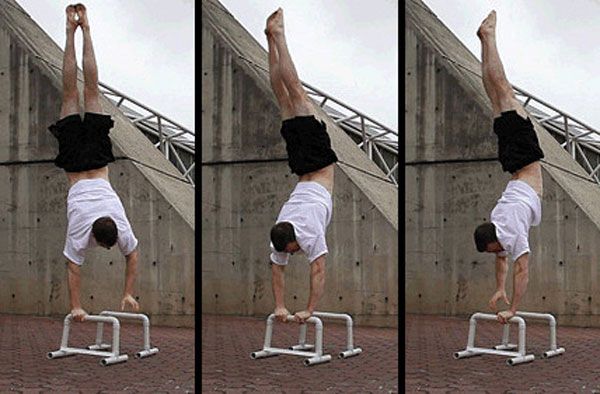
Handstand: Pirouette or U-turn
The planche
Try to change the position of the body up to the horizon relative to the ground. This position or exercise is called the “planche”. The body is tilted by changing the angle at the shoulder joint and transferring weight forward. Elbows should be pressed tightly to the sides. Try to return to the previous point from the horizontal position. It’s considered Supreme aerobatics.
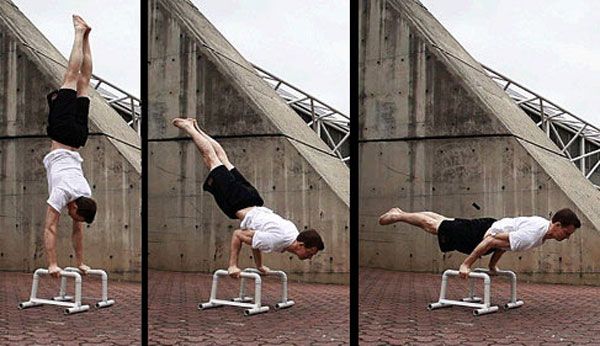
Handstand: The transition to the horizontal position
Using only one arm
To complicate it even more try using only one arm. Let’s learn how to do it. First, enter the standard pose and then try to take one hand off the ground. By doing so, you redistribute the weight, and it becomes much more difficult to keep the balance. And the load on the working arm and shoulder is doubled.
Video: How to Perform the Handstand Hold
Here are some do’s and do not’s for this calisthenics exercise.
Based on all of the above, we can say that to master the handstand you need 40% trained body and 60% mastered technique. Learning this exercise will not require much effort if you overcome the psychological fear of falling. Be patient and you’ll succeed!



